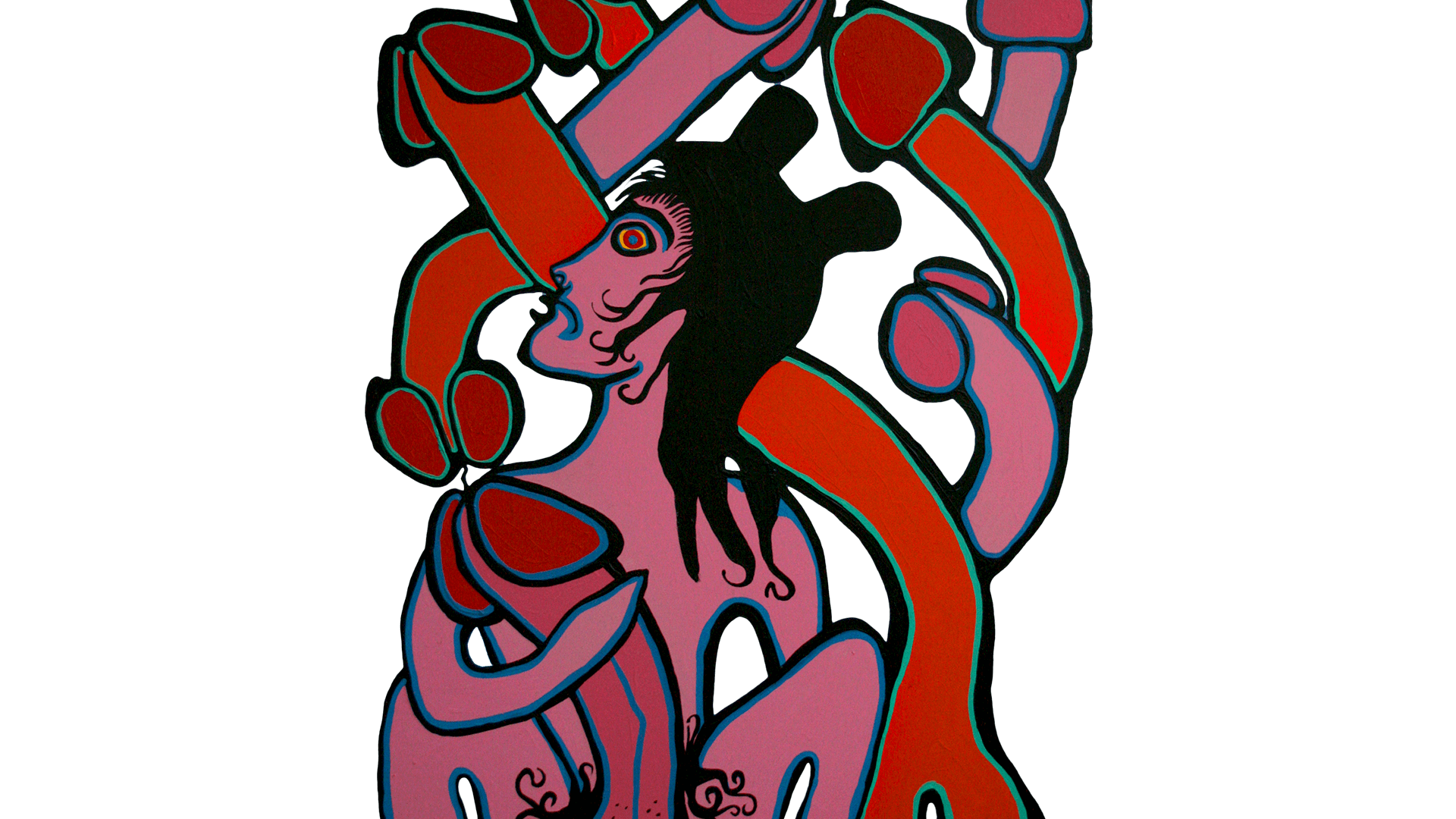In 1989, Morrisseau is living out west in British Columbia with his adopted son Gabe Vadas. He also meets Cory Dingle, a young student at the time, who becomes close friends with the artist. Today, Dingle is the director of the Morrisseau Estate.
Morrisseau was chosen to represent Canada along with artists Jeff Wall and Paulosee Kunilusee in a global exhibition mounted in Paris called Magicien de la Terre. Morrisseau visits Paris during the exhibition, sponsored by INAC/DFAIT, and accompanied by Gabe Vadas.
